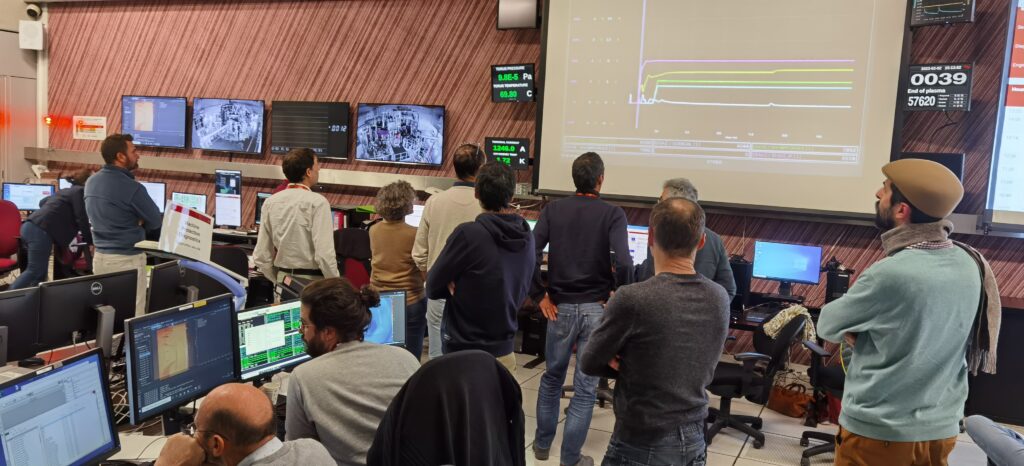An hour north of Aix-en-Provence, the French fusion experts at CEA are bringing their fusion device WEST back into operation. An eighteen-month shutdown saw the device outfitted with the same exhaust system as in its big next-door neighbour ITER, the international fusion project aiming to show that fusion can be a clean and abundant source of sustainable energy. “We’ll be able to study how ITER’s wall materials will evolve over its lifetime and how that will impact their operations”, says EUROfusion task force leader Emmanuelle Tsitrone.
Long-duration

WEST, the Tungsten (chemical symbol W) Environment in Steady-state Tokamak, is the national fusion device in France. Uniquely among European tokamaks, WEST is outfitted with superconducting magnets that allow for extremely long fusion experiments. That opens the door to investigating long-term effects of the harsh fusion environment on the materials inside a fusion device.
“Ultimately we aim for shots that last for up to 1000 seconds (more than fifteen minutes – editor), which is at the long end of the shots planned for ITER”, says Tsitrone. Now that WEST has been fully outfitted with a copy of the exhaust system or divertor that the future fusion device ITER will use, it’s ready to do pioneering work on how fusion materials hold up inside a tokamak.
Rocket exhaust
The divertor, at the bottom of a tokamak, is the only part of the device that comes into direct contact with the hot plasma. In a future power plant, the divertor will remove the fusion product helium before it chokes the fusion process. This direct contact means that the divertor experiences extreme heat loads comparable to the heat at the edge of the Sun or inside a rocket exhaust.
Tsitrone: “We want to see what kind of effects that has: melting, cracking or erosion of the material for instance. Those kinds of tests have been done in other dedicated testing facilities, but mainly for heat loads.” WEST instead offers a fully realistic tokamak environment, including the magnetic fields and particle impacts that will happen in ITER.
“It’s exciting: we’ll be able to advise ITER how their materials will hold up, as well as how that will impact plasma performance. We also want to identify the early warning signs for damage, so that we know when to ease back and stay below the limits of our materials.”

‘Eager to get started’
Although WEST already re-started producing plasma shots in December last year, the tokamak is still just at the start of its new campaign of experiments. The team has scheduled 544 shots for EUROfusion in 2023 to investigate different aspects of tokamak operation. The first experimental sessions organized in the EUROfusion framework took place in January, showing already a wealth of results on the newly installed ITER-like divertor, which will be at the heart of WEST’s research programme for this year.

The research in these experimental campaigns at WEST feeds into the European Roadmap to the Realisation of Fusion Electricity as part of mission 1 on plasma regimes of operation and mission 2 on heat-exhaust systems.
